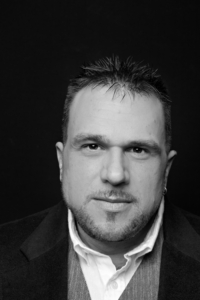Q&A with Robert Klara, author of The Hidden White House | March 30, 2017
Author Q&A
Robert Klara literally wrote the book on Truman’s renovation of the White House. We’re excited to welcome him to the Harry S. Truman Library and Museum on April 6 for a free public event and book signing (Event is free but RSVPs are requested—RSVP today).
 Klara took the time to talk with us about his book The Hidden White House. Find a full feature in the upcoming issue of TRU Magazine, a free magazine sent to all of our Members. Become a Member today to read the full interview, but below is an excerpt:
Klara took the time to talk with us about his book The Hidden White House. Find a full feature in the upcoming issue of TRU Magazine, a free magazine sent to all of our Members. Become a Member today to read the full interview, but below is an excerpt:
TRU: Can you give us a sense of the scope of the project?
RK: Numbers tell the tale better than anything. The interior included 25 bedrooms, 16 bathrooms, 69 closets, 412 doors, 29 fireplaces and 3 elevators. The new interior structure required 910 tons of steel, 500,000 linear feet of electrical wiring and 1,465 gallons of paint. It took 2 years, 3 months and 14 days to complete the renovation, which cost $5,761,000 (a little more than $58 million today).
TRU: How involved was Truman in the renovation?
RK: The architects, engineers and workmen might have answered too involved. Ever since his days in Congress, Truman had taken a hands-on, fastidious approach to every task placed in his hands. The White House renovation was no exception. Not only did Truman handpick two members of the special commission in charge of the renovation, he exerted his influence behind the scenes through White House Architect Lorenzo Winslow. But Truman’s involvement ran far deeper than the administrative level. Truman liked to leave the Oval Office to conduct surprise inspections of the renovation work. He’d ask questions of the laborers, and on at least one occasion climbed up the interior scaffolding on his own.
TRU: The interior of the White House changed in many ways during the renovation. Tell us about what led to the addition of a bomb shelter.
RK: The original renovation plans for the house provided for two subterranean levels to be used mostly for equipment and storage. But not long after workmen finished excavating the new basement, two events literally exploded on the world stage that changed everything: the Soviet Union’s surprise testing of a nuclear bomb in August of 1949; and the North Korean Army crossing the 38th parallel in tanks supplied by the Soviets in June of 1950. The resulting fear of nuclear confrontation with the Soviets led to a secret appropriation of part of the subterranean space below the house for an atomic shelter.
Become a Member to read the full interview in TRU Magazine.
RSVP today for Robert Klara’s event at the Library on April 6 to hear more about the White House renovation. This event is one in a series highlighting the current temporary exhibit, Saving the White House: Truman’s Extreme Makeover, on display through the end of the year.

